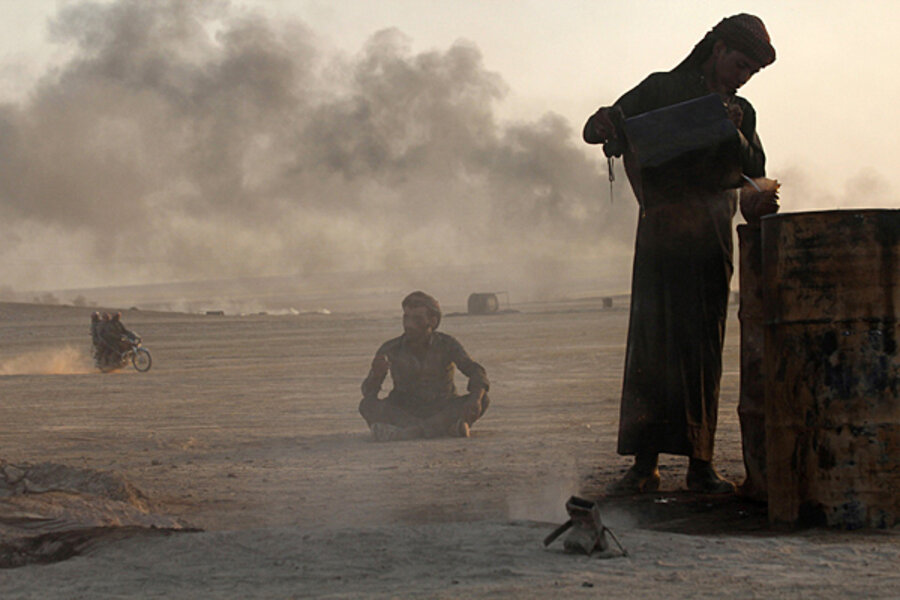US destroyers near Syria. Oil market likely to shrug off a strike.
The US has deployed four US Navy destroyers in the Mediterranean Sea, according to news reports Tuesday, in preparation of a possible attack on Syrian military sites. If American forces strike against Syria in the wake of alleged chemical weapon use by the Bashar al-Assad regime, its impact on energy would probably not be as significant as it would have been 10 or 20 years ago.
That's mostly because Syria's oil output is a fraction of what its neighbors produce. It's also because North America has had its own energy boom, better insulating it from shockwaves abroad.
Still, the threat of conflict spreading across the region has already put upward pressure on prices. And American allies in Europe still rely heavily on Middle East oil and gas, even if US imports are down dramatically since peaking in 2005.
"Oil markets are so integrated that price effects are going to come back to the US regardless of what the US is doing," Jeffrey Colgan, professor of international relations at American University, said in a telephone interview. Still, Mr. Colgan projected oil markets would "shrug at any kind of activity in Syria, unless it spills over into Iraq."
US crude rose upwards of $3.00 to $109.32 early Tuesday, matching its high for the year. Prices were already on the rise due to unrest in Egypt, a low-output oil country, but one that controls vital trade routes.
"The business and energy markets don’t like risk," David Biette, an energy analyst at the Woodrow Wilson International Center for Scholars, a Washington-based think tank, in a telephone interview. "They want to know what’s going to happen."
Syria produced 182,000 barrels of oil per day in 2012, according to the US Energy Information Administration, putting it at No. 33 among the world's top oil producers. Fighting between the government and opposition forces have cost the country's oil industry upwards of $2.9 billion and has cut production by 50 percent since March 2011.
It has also delayed construction of a $10 billion Iran-Iraq-Syria natural gas pipeline aimed at transforming Syria into a crucial energy transit hub. The pipeline would bring Iranian gas to European markets, in competition with Qatar's plans for a similar pipeline.
The shifting of the global energy landscape has helped minimize the spikes of unrest in Egypt, Syria, and elsewhere in the region. New drilling techniques have flooded North America with its own supplies of oil and gas, loosening the Middle East's grip on global oil markets.
"Imagine that five years ago someone had said to you: 'In 2013, Egypt, Libya, Syria, Tunisia, Yemen and Iraq will all be in varying states of political turmoil or outright civil war; what do you think the price of crude will be?'" wrote Thomas Friedman in The New York Times. "You’d surely have answered, 'At least $200 a barrel.'"
Instead, it's a little more than half that. "The Middle East has gone from an addiction to a distraction," Mr. Friedman wrote.
That may not be the case for China. A rise in motorists has driven demand for oil in the country. China is forecast to overtake the US as the world's largest oil importer by 2017, according to a report out last week by consultancy Wood Mackenzie.






